Performance Reviews : The Essential Guide
The process and design of performance reviews has changed many times over the last century. Unsurprisingly, these changes have been driven by advances in technology, workers' rights and the workplace itself. When included as part of the continuous performance management process the review becomes an excellent period of reflection for both the employee and manager, and gives employees the chance to plan for their future development.
This guide will take you through the development of appraisal systems, where the performance review is at today and what steps you can take to rebrand your performance review process. You'll learn the key elements of an effective employee performance review and get a few tips for employees and managers to get the most out of their discussions. In short — thoughtful reviews focused on individual development are the cherry on top of the continuous performance management cycle and they're here to stay.
This Performance Reviews guide covers the following areas:
- Definition
- History
- Where are Performance Reviews Today?
- Approach of Major Organizations
- Rebranding Performance Reviews
- Best practices
- The Performance Review Cycle
- How to Create an Effective Process
- Types
- Mistakes to Look Out For
- Tips for Employees
- Tips for Managers
What is a Performance Review?
Simply put, the performance review is a discussion between an employee and their supervisor. They assess the employee's performance over a period of time, recognize achievements and talk through areas for development and improvement. In theory this should be an easy and motivating discussion but in practice the review or appraisal has become one of the most hated parts of performance management. Often it's because team members feel the process is time-consuming and irrelevant to their actual career progression. Looking over the past 100 years or so of performance appraisals we can see where the classic review techniques developed and how organizations are reforming the employee performance review process for the future.
A History of Performance Reviews
The process and design of reviews has changed many times over the last century. Unsurprisingly, these changes have been driven by advances in technology, workers' rights and the workplace itself. From the first research showing that worker satisfaction leads to greater productivity, to influences from governments and the military after WWII, there have been major shifts in the organizational approach to management and engagement. Some of the biggest developments have come in the last 20 years when performance management first started to move online. These are a few of the milestones that changed the performance appraisal and companies' approach to performance management.
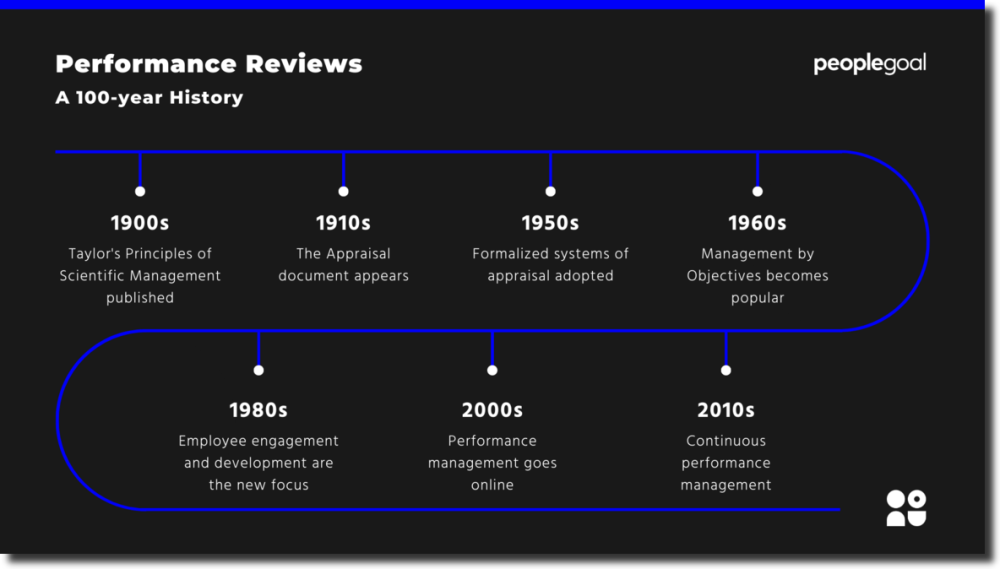
1900s:
Frederick W. Taylor publishes The Principles of Scientific Management
Taylor's techniques of workplace design, measurement and production control led a new scientific approach to management principles. His publication has since been voted the most influential management book of the 20th century.
WWI:
The Appraisal document appears.
The U.S. military implemented a documented merit rating system to identify low performers recommended for discharge or transfer.
1920s:
Elton Mayo, an Australian psychologist and researcher, paves the way for the human relations movement.
Publishing The Hawthorne Studies and The Human Problems of an Industrialized Civilization, Mayo measured the relationship between productivity and the working environment. His research concluded that workers' performance is dependent on both social relationships and their specific job requirements.
1940s:
Mayo's research changes attitudes towards management.
As a direct result of Mayo's research, production improved as managers recognized the value of leading rather than directing employees. Management became more encouraging, began leading by example and focused on coaching employees in their skills development.
1950s:
Formalized systems of appraisal are adopted by most organizations.
The U.S. government implemented the Performance Rating Act (1954) to assign one of three ratings to government employees: Outstanding, Satisfactory or Unsatisfactory (sound familiar?) By the end of the 1950s the backlash came as employees felt they didn't have a say in the process and were being rated on their personality, not their performance.
1960s:
MBO - Management by Objectives - becomes popular.
Following Peter Drucker's 1954 book The Practice of Management, organizations shifted their focus to setting and tracking clearly-defined objectives with buy-in from both employees and managers.
1970s:
Aubrey Daniels defines the term Performance Management to describe a technology for managing both behavior and results.
Criticism of appraisal systems built up, centered around how subjective the reviews were, and some cases were even taken to court. In an attempt to be more objective, companies began to focus on using psychometrics and standardized rating scales, but the manager-led review still persisted.
1980s:
The focus shifts to employee participation and engagement.
MBO remained a popular system, and companies started to think about how best to improve employee motivation and engagement. Employee self-reviews become the standard to allow for a more balanced appraisal. Measuring qualitative values like communication and teamwork became popular, as well as how these tied back to the company strategy.
2000s:
Performance management goes online.
Organizations looked to automate and streamline their reviews with software providers. The benefits of aggregated data and easier to analyze trends was a big boost to leadership, but companies found that managers began to "copy and paste" standard responses when appraising their teams - partly because a trend towards flatter organizational hierarchy meant most managers were directly overseeing more than 20 reports.
2010s:
Continuous performance management and 360 degree ratings become popular.
The 360 degree performance feedback process provides a more holistic view of jobs performance, and became a core part of (or replaced!) the performance review. Continuous performance management focuses on goal setting, feedback and regular one to one meetings to promote regular employee-manager and colleague communication.
Where Are Performance Reviews Today?
The past five years have seen a trend in businesses (especially in tech) saying, "Ditch the performance review!" There are good reasons for this if you take a look at the problems with traditional performance appraisals, but these can and should be reformed.
The Traditional Performance Appraisal Process
In the conventional appraisal process, Human Resources supplies a guidance document and the manager writes up a performance assessment for each of their direct reports for the last year in review. In most cases an employee fills out a self-assessment to share with their manager and a face to face discussion takes place. The HR team finds themself managing an admin-heavy process of chasing down paper reviews, compiling responses and maintaining employee records without having time to look at the actual outcomes of the review. Compensation and bonuses are often tied to the results of the performance evaluation which then requires subjective final ratings to make the overall company analysis easier for the leadership team.
Why the Traditional Performance Review is Painful
Employees and managers are frustrated with the bureaucracy and inefficiency of the traditional review process. Spending hours in December trying to remember what you did in January feels like a waste of time, and both parties are often unfairly influenced by how the employee performed in the few weeks before the review - positively or negatively. Worse still, the outcomes of the appraisal don't link back to career progression and the process ends up feeling like a check-box exercise with no real impact on employee development. Managers of large teams submit reviews months past the deadline and Human Resources is left chasing down final ratings just to be able to close off the review cycle. Managers are also uncomfortable (or too comfortable) being the sole judge of their direct reports' performance and so leave biased or vague assessments that demotivate employees.
How Are Major Organizations Approaching Performance Reviews?
It's no surprise that organizations are shifting to a continuous performance management approach with more focus on tracking objectives and gathering 360 degree feedback. However, even those companies who have "ditched" the annual performance review have actually replaced it with performance snapshots and check-in meetings that accomplish what a good appraisal really should - benchmarking success, opening up communication channels and encouraging individual coaching and development. The traditional process may be outdated, but the need for a reflective discussion certainly isn't.
Netflix
Around 2009 Netflix's culture document was published online. There was a massive response to their culture of radical openness and their attitude of "people over process". They stripped out as much bureaucracy as possible and focused solely on 360 degree feedback. Patty McCord, the then Chief Talent Officer, said:
"We believe we will learn faster and be better if we can make giving and receiving feedback less stressful and a more normal part of work life. Feedback is a continuous part of how we communicate and work with one another versus an occasional formal exercise. We build trust by being selfless in giving feedback to our colleagues even if it is uncomfortable to do so. Feedback helps us to avoid sustained misunderstandings and the need for rules. Feedback is more easily exchanged if there is a strong underlying relationship and trust between people, which is part of why we invest time in developing those professional relationships. We celebrate the people who are very candid, especially to those in more powerful positions. We know this level of candor and feedback can be difficult for new hires and people in different parts of the world where direct feedback is uncommon. We actively help people learn how to do this at Netflix through coaching and modeling the behaviors we want to see in every employee."
And, while Netflix got rid of the formal reviews, they replaced it with ongoing performance conversations and check-ins.
"Many years ago we eliminated formal reviews. We had held them for a while but came to realize they didn’t make sense—they were too ritualistic and too infrequent. So we asked managers and employees to have conversations about performance as an organic part of their work. When we stopped doing formal performance reviews, we instituted informal 360-degree reviews. We kept them fairly simple: People were asked to identify things that colleagues should stop, start, or continue. In the beginning we used an anonymous software system, but over time we shifted to signed feedback, and many teams held their 360s face-to-face. If you talk simply and honestly about performance on a regular basis, you can get good results."
General Electric
GE was famous for Jack Welch's rigid system of forced rankings, conducted annually. An employee's final rating was judged against their peers and the bottom 10% of performers were cut. These days GE encourages employees and managers to collaborate using a performance-tracking app — PD@GE — that allows everyone to document meeting notes and upload performance conversations. The annual appraisal meeting still takes place but it's now focused on these continuous performance notes and how the manager can guide their direct reports' future progress.
Ernst & Young
In contrast to Accenture, Deloitte and other firms who quickly jumped to scrap performance appraisals entirely, EY felt it would give colleagues an excuse not to have a discussion about performance at all. They replaced their bi-annual reviews with weekly check-in meetings to address performance issues as and when they arise. And in fact, although Deloitte removed their backward-looking review system, they reintroduced ratings with a view to document how the employee's actions impact the rater, not their inherent capabilities.
Rebranding the Performance Review
"People want direction on where they are going, not micro-directions on how to get there." — Simon Sinek
The real reason to conduct performance reviews is to improve performance. Setting aside time for discussion between employees and managers is a vital part of encouraging an engaged and motivated workforce. Looking back isn't always a bad thing! With continuous performance management you can run the risk of encouraging short-termism. Aligned goals and regular feedback are fantastic for keeping you on track, but if you're only looking out for the next hurdle you don't take the time to step back and reflect on the bigger picture. The performance review should be that all-important space and it should happen at least every six months.
Having all of the day to day data - your goals, feedback, check-ins and social recognition - already documented takes away the admin headache of the traditional performance review, and gives both employees and managers the space to focus on the overall employee experience. Employee experience is seen as a bit of a buzzword, but it really matters.
It's crucial that the performance review is a two-way conversation and that you're not relying only on managers to drive the assessment. Tapping in to an individual's internal motivation rather than external direction can only be done through clear and direct discussion where the focus is on engagement and encouragement, not punishment.
What Does an Effective Performance Review Look Like?
Collaborative
Establish a conversation. The importance of the employee self-assessment can't be overemphasised. When that self-assessment is taking into account peer feedback and all the recognition that's been received over the last review period it's much easier for the employee to deliver a balanced reflection of their performance. You're also driving a sense of autonomy and responsibility going in to the discussion with their manager. The manager's job is then to provide coaching and suggestions from their own experience to help the employee develop themselves.
Open and Honest
Everyone knows inherently what their own strengths and weaknesses are. Being allowed to openly acknowledge what has to be improved without fearing punishment promotes trust between the employee and manager, and in the organization. Just as important is to recognize what's gone well and celebrate the wins!

Reflective
A good performance review should be an opportunity to look back over the big picture and pull out broader themes. It's important to incorporate your goals and feedback in to this to get an accurate idea of where you stand, and removing the hassle of updating those in the same time as the appraisal frees you up for some deep thought.
Action orientated
Use the performance review to determine what action needs to be taken to improve performance. It's no good saying you've been underperforming without defining measures to improve it. Determine an employee's training needs, outline concrete changes they should be making and provide developmental support from your own experience. This is the easiest area that HR can have a hand in guiding, together with the manager.
Easy to use!
This goes without saying. Trying to link up endless paper forms with months-old feedback emails is a waste of everyone's time, not to mention the resources needed in HR to compile all of the results at the end of the cycle. Automate your reviews as much as possible. It frees you up to rely on employees and managers to drive the appraisal process with all of the documentation they need to make it successful. Unconvinced? We've got 6 more reasons to automate your performance review.
The Performance Review Cycle
How often should performance reviews take place? In the traditional appraisal process reviews would happen once a year, with a month to six weeks for employees and managers to complete their conversations and another month for HR to collate the data. Many companies these days prefer to hold smaller, quarterly "mini reviews". Other organizations choose to go with a lighter mid-year review and a longer, more formal annual review.
Quarterly reviews
Quarterly reviews are more of a performance snapshot than a traditional appraisal. They're a light-weight check-in meeting between an employee and their manager to assess whether you're on track and to call out where you need support. The responsibility is put on employees and managers to drive these conversations without too much interference from HR, other than to provide them with a conversational framework. As these happen frequently it's good to keep the questions short and open-ended, and not focus on giving any ratings.
Bi-annual reviews
Reviews every six months give you a bit more room to assess the display of competencies and values as well as to check in on performance progress. Ratings can be helpful here to give an indication of where an employee stands, and are useful as a reference in the year-end review to see how they've improved.
Annual reviews
Conducting year-end reviews can be a much more formalized process than quarterly or bi-annual check-ins. You've got space to design a more in-depth form so long as you give employees and managers enough time to prepare for each review. Even so, it should still be a summary view of the year to date and a chance to discuss future plans, development and training.
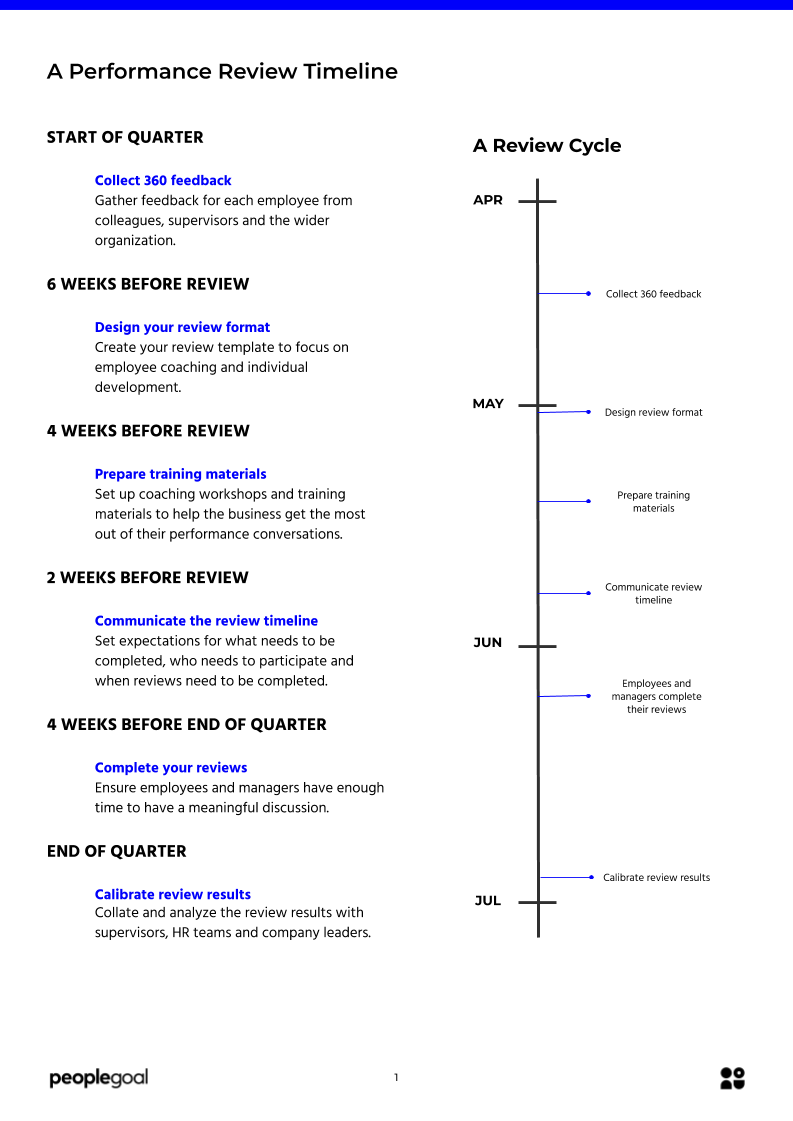
How to Create a Performance Review Process
1. Set up your goals and feedback processes
Make sure you have a robust system of aligned goal-setting and 360 degree feedback in place. This will cover your continuous performance management cycle throughout the year. You need to establish a cadence of regular check-ins on goal progress and ongoing peer feedback. Our Essential Guide to SMART Goals and Essential Guide to OKRs will take you through all you need to know to get these established.
2. Design your review format
The content of your review form(s) and how often you conduct a performance review should be decided by HR and your leadership team, taking into account recommendations from employees and managers. Whether this is quarterly, bi-annually or annually will rely on how often you're gathering feedback and holding employee-manager check-in meetings. Use your employee engagement survey to take on board what it is your organization is really looking to track. So long as your focus is on improvement and individual development, the actual format of the review questions is entirely dependent on your company culture. We'll go through different types of review questions you can work with below.
3. Prepare training and workshop materials
The biggest part of the review is letting your team members know why the review is being conducted and how they can get the best out of it. If employees aren't sure what the outcome of the review is they'll be reluctant to get on board. Managers often aren't comfortable being the sole judge of their employees' performance and will struggle to provide the criticism needed to improve. They also need to know what the company can offer in terms of training and career development. You can't leave this unaddressed or your performance reviews will continue to be ineffective and you'll undermine trust in the whole performance process. Provide guidance for your colleagues by preparing training decks and holding internal workshops. Teach everyone the techniques to deliver honest, actionable feedback. We have some helpful guides to giving constructive feedback and encouraging feedback from employees to get you started.
4. Communicate the performance review timeline and expectations
Give a clear framework for the review timeline and the deadlines participants need to meet well ahead of the review period. Publish the review content along with your timeline so that everyone has a chance to prepare. If they're aware of what's involved they can properly plan their time to get the most out of the review discussion. You should make it clear to employees that they are driving the process of their self-assessment, and that it's just as important as the manager's assessment. Give them the tools to be autonomous and encourage their own self motivation - it's much more powerful than being dictated to.
5. Prepare your end of review cycle communications
What are the outcomes of the review? Who will be seeing the performance appraisal? What's expected from employees after the review is complete? Answering all of these before the review period starts is just as important as the discussions themselves. Treat your employees like the adults they are - you need to be transparent in what the performance review means and follow up on the actions you've promised.
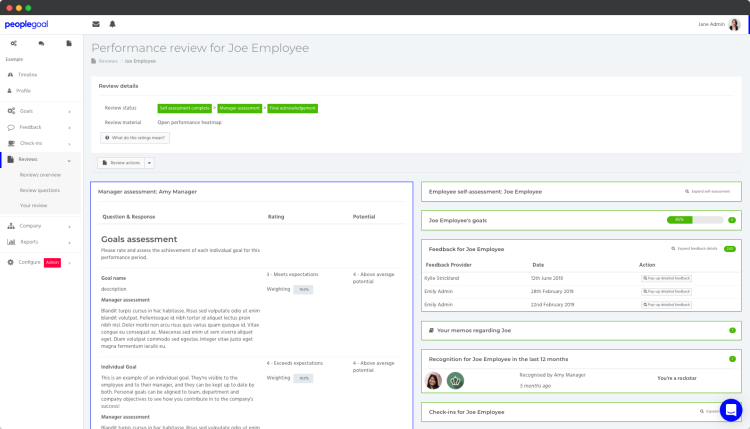
Types of Performance Review Questions
Competencies and values
Creating review questions for core competencies and your company values gives a good structure for you to measure performance across many different role types. Ideally everyone should be displaying the company values in their approach to work. It's important to be clear that you're reviewing how those behaviors are demonstrated, not what is inherent to someone's personality. What are the actual actions an employee took that showed leadership, for instance? What are some actions they can start doing to encourage better communication? The competencies framework works well with ratings (both on performance and potential) so that you can generate a company-wide report that pulls out where people are strongest and where more development is needed.
Team and department review questions
Don't be afraid to have different review forms for different teams. What matters most to your Marketing team might be completely different to your Administrative functions. When creating your review form for the first time, set aside some time for discussions with team leads. What does your Operations department value most? Where does your Head of Sales want to rate and track the achievement of their team? This makes the review much more relevant and specific, and will tie back to the unique goals of the org unit.
Role specific review questions
Role-based review questions are excellent for organizations with defined levels of seniority and competency, particularly in consulting businesses. You can work with your job roles, e.g. Analyst, Associate, Director, VP and Managing Director. You'll have a consistent set of questions across every role that evaluates job-specific competencies relevant for the employee's level in the organization. You'll then have much more clarity in your reporting to support succession planning, and it becomes clear to the employee and manager what they need to demonstrate in order to move up in their career.
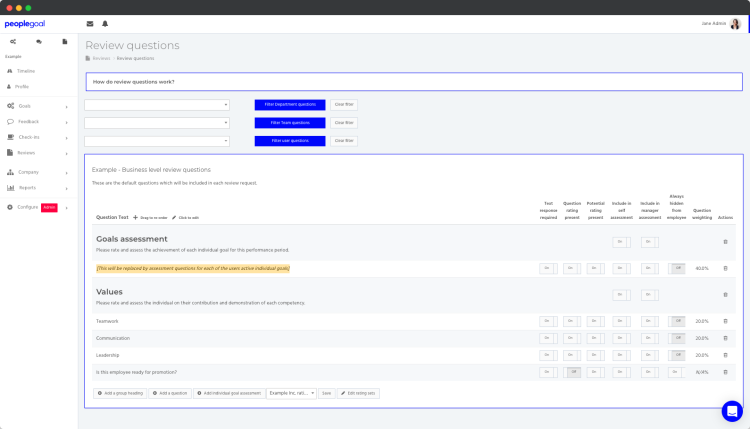
Goal based review questions
Goal-based questions are an essential part of the performance evaluation to reflect on what was planned, what was achieved and where things went off track. So long as you have your Goal process defined with regular check-ins, the review time doesn't require a lengthy discussion of each individual goal. You should rather focus broadly on whether the goals were too easy or too difficult, what coaching is needed to drive more development and if the context of the goals are clear and relevant for the organization. You can use your review time to set new objectives for the next cycle if it comes up naturally, but ideally that action should be a separate discussion.
Discussing compensation
Compensation and promotion should not be a part of the review discussion. When employees are aware that their answers and ratings are being used to evaluate a bonus there's no way they'll be able to give an honest reflection of their performance. You'll then find a big disconnect between the employee's self evaluation and their manager's assessment. Both of these undermine the ability to develop employees and see improvement in performance. The review itself should give a sense of whether the employee is ready for promotion, and you can run a compensation analysis on a separate cycle.
Ratings on Reviews
This is one of the biggest questions we’re asked - should we use ratings or not? Ratings are very useful as an indicator only of where an employee stands according to your company's criteria. However, you run the risk of employees feeling they're reduced to just a number, and it's no help being given a rating without written reasons to justify it. Metrics are subjective, biased and flawed. Nobody has perfected a rating system so far! Ratings are great for leadership to build a report to get a sense of who needs developmental help, but they are not the be all and end all of performance management. Make sure to communicate to employees the reasons for using ratings. This again comes back to transparency in the process - when team members know the full context they're actually likely to ask for ratings to get an honest picture of their overall performance, so long as those ratings are backed up with recommendations for improvement.
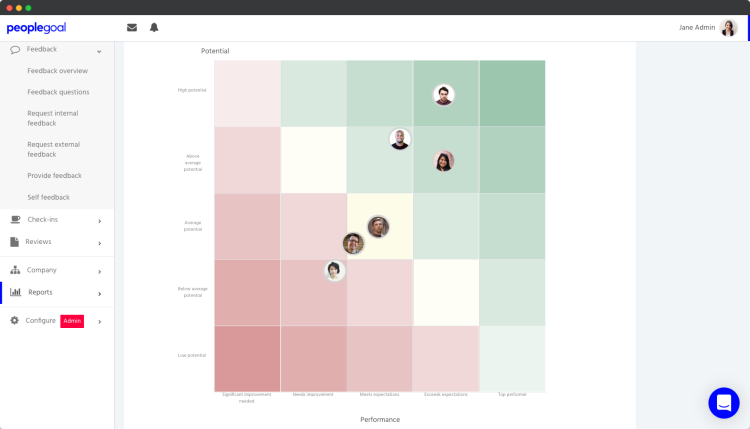
If you need some help crafting effective Performance Reviews for the first time, we've got Five Performance Review Templates for all stages of your review cycle!
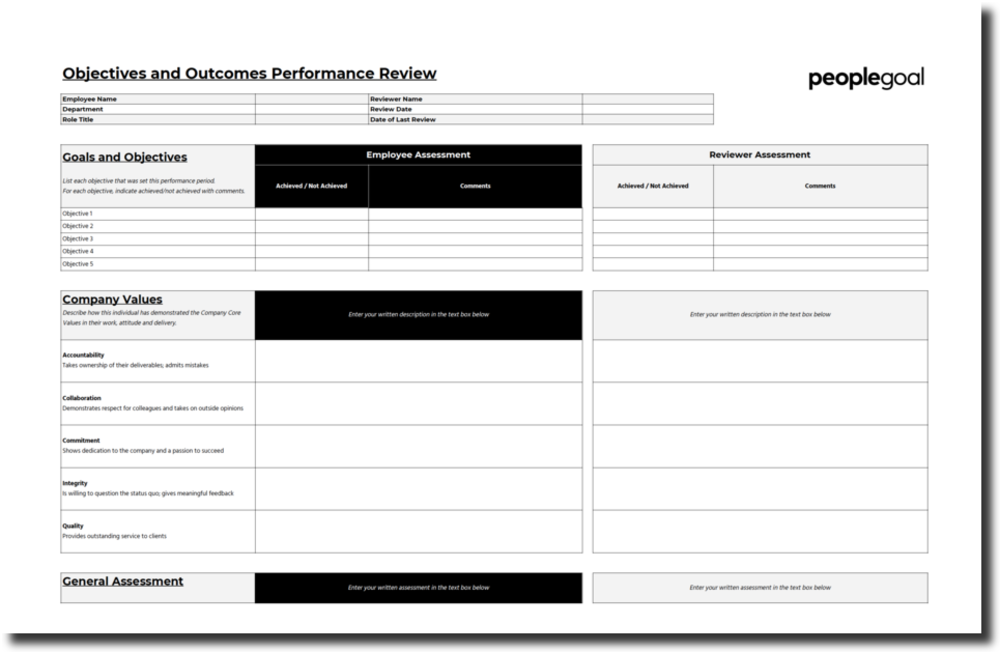
Performance Review Mistakes To Look Out For
1. Long, irrelevant review questions
It's tempting for HR to try to gather as much analysis as possible in the review form. But it's no wonder that nobody wants to participate when there are 20+ "agree / disagree" type questions with no real relevance to an employee's job role. Separate the review out from feedback, pulse surveys, the engagement survey and all your other HR touchpoints. Keep your questions focused on actionable development.
2. Managers avoid raising difficult topics with their employees
You can see from the 360 degree feedback that an employee has a hotspot for improvement. You know it and they know it, but when looking at the review this was never raised. It's likely your manager is uncomfortable giving criticism and needs training to address this.
3. Responses are generic and nonspecific
From both the employee and the manager side, this probably means your review questions are not targeted enough. When the review form is relevant and specific to the individual's development there's no room for them to provide standard cut and paste answers. Teammates may also not be aware of context and importance of the review discussion, in which case you need to go back to your communications and highlight this.
4. The reviewer is not the employee's direct supervisor
While a line manager may oversee 25+ direct reports, are they actually the employee's day to day supervisor? For an effective review process to target specific improvements the reviewing manager needs to have a deep knowledge of the employee's day to day duties and responsibilities. Don't worry about reviews following an organizational hierarchy if it's going to be at the expense of real performance improvement.
5. Rater bias
We're human and humans are prone to bias. If a manager is providing inconsistent assessments look out for signs of favoritism. Compare the manager's assessment to the 360 degree colleague assessments too - major differences are easy to spot. Rater bias is another reason not to take ratings at face value - look at why that rating was given and step in to calibrate ratings if necessary.
Performance Review Tips for Employees
1. Be proud
Top performers are the least likely to rate themselves highly. The performance review is just as much about celebrating successes as it is about identifying weaknesses and using those to drive yourself forward. You can't do that if you're being needlessly humble.
2. Be honest and critical
In the same vein, it's difficult not to be defensive about where you've gone wrong. Own up to mistakes and you'll be able to recognize them in future. If you're going in to the review ready to paper over your challenges you're not going to get the support you need to overcome them.
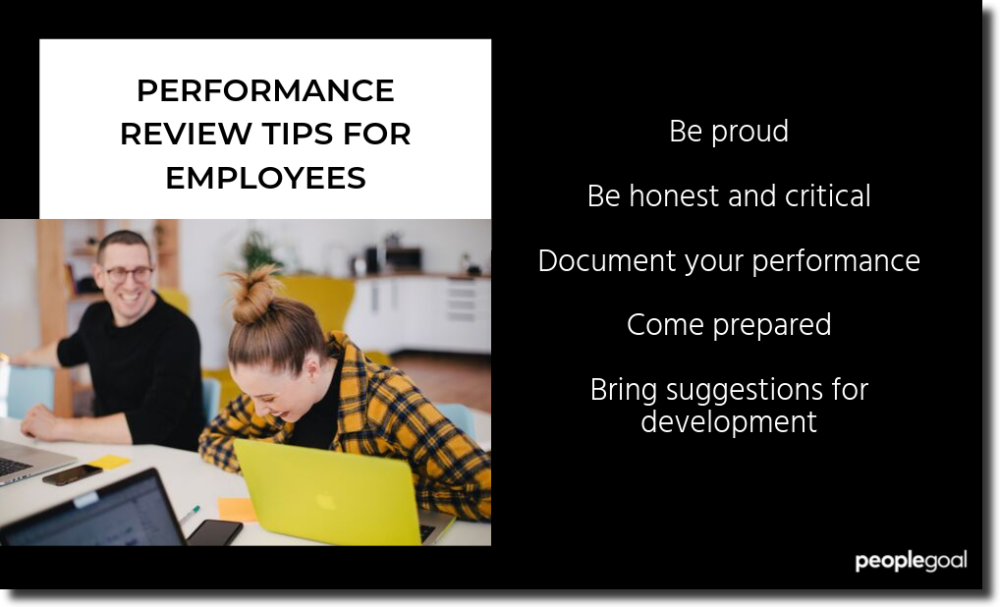
3. Document your performance throughout the year
The easiest way to achieve 1 and 2 is to keep thorough records of your performance throughout the year. Even if your organization doesn't have a performance management system in place, keep a performance folder where you save all of your feedback and track and manage your goals.
4. Come prepared
If you've nailed step 3 you're already mostly there. In addition to that, read the review form well ahead of the meeting to understand what it is you'll be discussing with your manager. Draft out your responses and make notes for yourself to keep things on track and make the best of your meeting time.
5. Bring suggestions for training and development
You're the one in charge of your own career. What are the skills you need to get you where you want to go? Your company will often have internal training courses or fund a program to provide learning and development. Bring those suggestions to your manager and you'll be surprised how much support is available to learn new skills. You can also create a development plan for yourself and bring this to your review meeting.
Looking for some inspiration in your next review? Here's Jeshua to take you through the key phrases you can use to prepare for your appraisal.
Embedded content: https://www.youtube.com/watch?v=Tja15-nXjPg
Performance Review Tips for Managers
1. Come prepared
Read your employees' self-assessments well ahead of time and make notes for the meeting. Employees can tell when you're winging it and there's nothing more demotivating than a manager who doesn't care. You need to be encouraging and engaging, especially when intervening on poor performance.
2. Don't do the feedback sandwich
Wrapping up a negative criticism between two positive comments. We've all heard it and we know exactly what it means. Be upfront with your criticism and get to the point of what needs to be done to improve it. Your goal is to build trust and that requires honesty. If you're stuck for words, we've got 70 useful performance review phrases for every function.

3. Stick to the review date
As much as possible stick to the agreed date and time of your review. Rescheduling sends the message that you've got more important things to do than focus on your employee.
4. Listen more than you speak
Your employee should be speaking more than half the time. The performance review meeting is their time to reflect on their progress and give you feedback on where you can support them. Encourage employees to open up with open-ended questions. If you've paid attention to their 360 feedback you'll have an idea of where to direct those questions to bring up the issues that need attention. Keep the meeting spirit conversational.
5. Address training and development requirements
Be aware of what the company can offer in terms of training and development. Even if there aren't formal courses there are plenty of internal resources that can help your employee grow. Think back to your own experience of what worked for you to guide your employee in their self-development.
There's no need to ditch your employee performance reviews! Appraisals needn't be an exhausting process if you set them up correctly and approach them as an ongoing conversation. When included as part of the continuous performance management process the review becomes an excellent period of reflection for both the employee and manager, and gives employees the chance to plan for their future development.
Customer Success Manager

